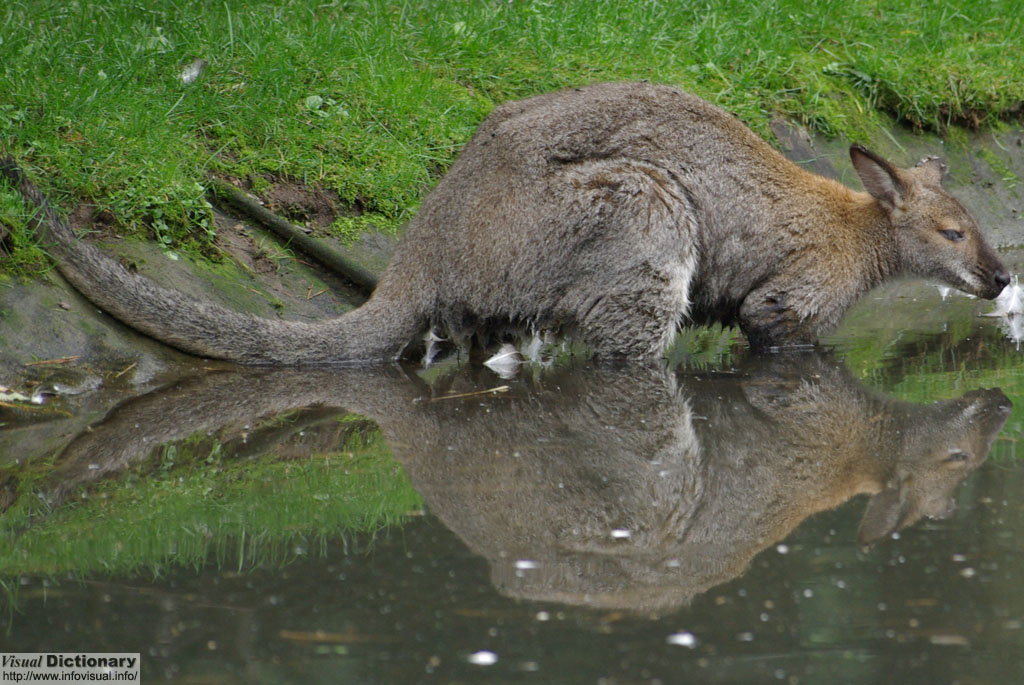Photo
Kangaroo

A kangaroo is a marsupial from the family Macropodidae. In common use the term is used to describe the largest species from this family, the Red Kangaroo, the Antilopine Kangaroo, and the Eastern and Western Grey Kangaroo of the Macropus genus. The family also includes many smaller species which include the wallabies, tree-kangaroos, wallaroos, pademelons and the Quokka, some 63 living species in all. Kangaroos are endemic to the continent of Australia, while the smaller macropods are found in Australia and New Guinea. In general, larger kangaroos have adapted much better to changes wrought to the Australian landscape by humans and though many of their smaller cousins are endangered, they are plentiful. They are not farmed to any extent, but wild kangaroos are shot for meat, sport, and to protect grazing land for sheep and cattle. Although there is some controversy, harvesting kangaroos for meat has many environmental and health benefits over sheep or cows grazed for meat. The kangaroo is an Australian icon: it is featured on the Australian coat of arms, on some of its currency, and is used by many Australian organisations, including Qantas.
Europeans have long regarded kangaroos as strange animals. Early explorers described them as creatures that had heads like deer (without antlers), stood upright like men, and hopped like frogs. Combined with the two-headed appearance of a mother kangaroo, this led many back home to dismiss them as travellers' tales for quite some time. The first kangaroo to be exhibited in the western world was an example shot by John Gore, an officer on Captain Cook's Endeavour in 1770. The animal was shot and its skin and skull transported back to England whereupon it was stuffed, by taxidermists who had never seen the animal before and displayed to the general public as a curiosity. Kangaroos have large, powerful hind legs, large feet adapted for leaping, a long muscular tail for balance, and a small head. Like all marsupials, female kangaroos have a pouch called a marsupium in which joeys complete postnatal development.
Kangaroos have few natural predators. The Thylacine, considered by palaeontologists to have once been a major natural predator of the kangaroo, is now extinct. Other extinct predators included the Marsupial Lion, Megalania and the Wonambi. However, with the arrival of humans in Australia at least 50,000 years ago and the introduction of the dingo about 5,000 years ago, kangaroos have had to adapt. The mere barking of a dog can set a full grown male boomer into a wild frenzy. Wedge tailed Eagles and other raptors usually eat kangaroo carrion. Goannas and other carnivorous reptiles also pose a danger to smaller kangaroo species when other food sources are lacking. Along with dingos and other canids, introduced species like foxes and feral cats also pose a threat to kangaroo populations. Kangaroos and wallabies are adept swimmers, and often flee into waterways if presented with the option. If pursued into the water, a large kangaroo may use its forepaws to hold the predator underwater so as to drown it. Another defensive tactic described by witnesses is catching the attacking dog with the forepaws and disembowelling it with the hind legs.